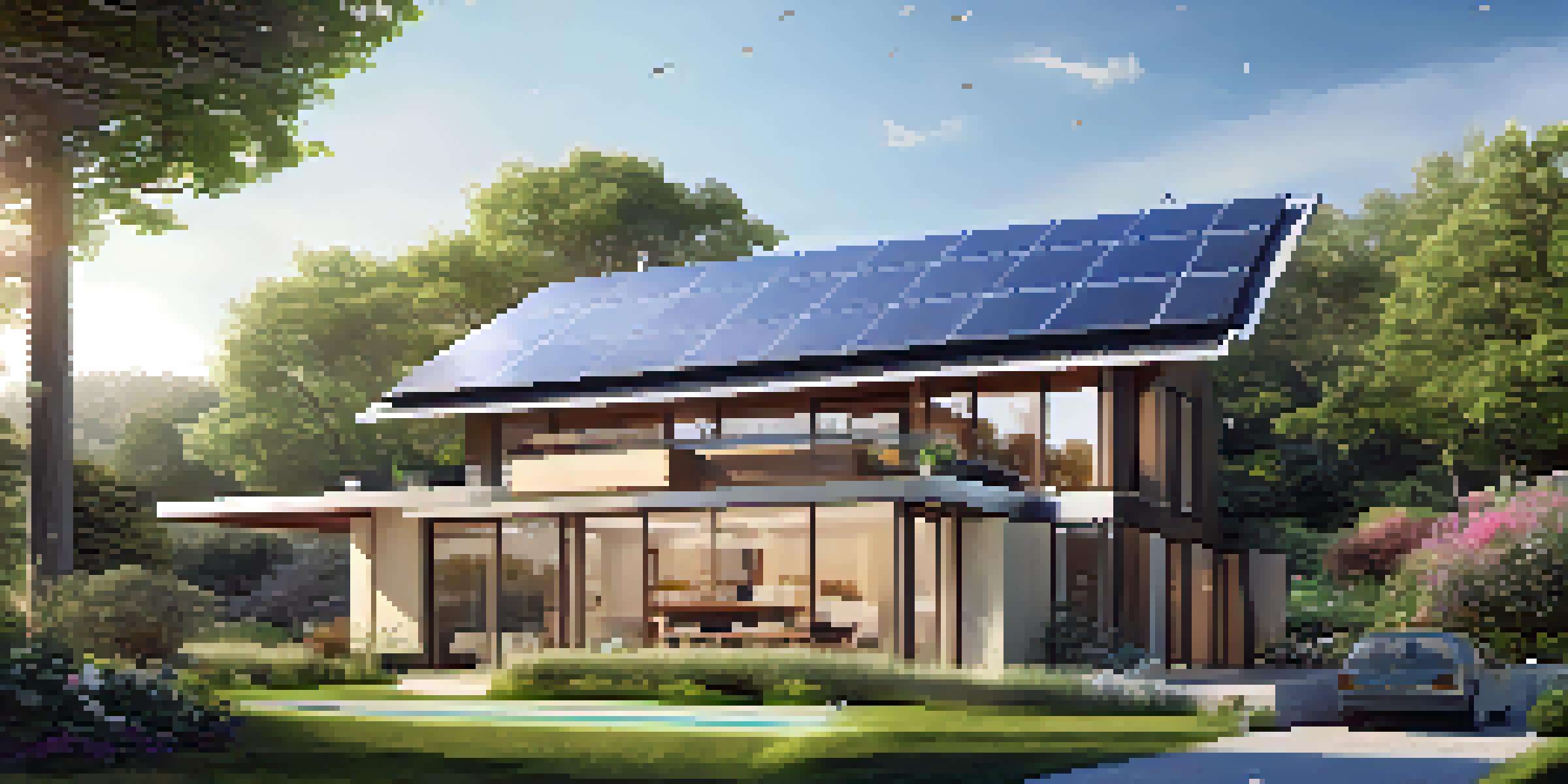The Impact of Orientation on Energy Efficiency in Buildings

Understanding Building Orientation and Its Importance
Building orientation refers to the direction a structure faces, which can significantly affect its energy performance. For instance, a home positioned to capture maximum sunlight can reduce heating costs in colder months. Conversely, a poorly oriented building may struggle to maintain comfortable temperatures, resulting in higher energy usage. Understanding this concept is essential for architects and builders aiming for energy-efficient designs.
Orientation is key to maximizing the energy efficiency of a building, as it influences both sunlight exposure and natural ventilation.
The orientation of a building can influence natural light exposure, which plays a vital role in reducing reliance on artificial lighting. By strategically placing windows and designing spaces that harness sunlight, buildings can enhance their livability while minimizing energy consumption. This not only leads to lower utility bills but also contributes to a more sustainable environment.
Moreover, considering building orientation during the design phase can lead to long-term benefits. For example, structures that take advantage of cross-ventilation can reduce the need for air conditioning. By understanding how orientation affects energy efficiency, stakeholders can make informed decisions that promote sustainability.
The Role of Sunlight in Energy Efficiency
Sunlight is a powerful natural resource that can be harnessed to improve energy efficiency in buildings. Proper orientation allows for maximum sunlight exposure, especially in the colder months when heating is necessary. This can reduce the reliance on heating systems, leading to significant energy savings over time.

On the flip side, excessive sunlight in warmer months can lead to overheating, which increases cooling costs. By understanding the balance between sunlight exposure and heat management, architects can create designs that optimize energy efficiency throughout the year. Utilizing shading devices, such as awnings or overhangs, can help mitigate this issue.
Building Orientation Boosts Efficiency
Proper building orientation significantly enhances energy performance by maximizing natural light and ventilation.
Additionally, the use of solar panels can further enhance the energy efficiency of a well-oriented building. When placed strategically, solar panels can capture sunlight more effectively, reducing energy bills and carbon footprints. Thus, the interplay between orientation and sunlight is crucial for sustainable building design.
Wind Patterns and Building Orientation
Wind direction is another factor that can affect a building's energy efficiency. Properly orienting a building can enhance natural ventilation, allowing fresh air to flow through the space without excessive reliance on mechanical systems. This can lead to lower energy consumption and improved indoor air quality.
Sustainable design is not just about being eco-friendly; it also encompasses cost-effectiveness and long-term savings on energy consumption.
For example, buildings that are positioned to capture prevailing winds can benefit from natural cooling in warmer months. This reduces the need for air conditioning, which is often a significant contributor to energy costs. By designing with wind patterns in mind, architects can create comfortable and energy-efficient living environments.
In contrast, a building that blocks wind flow may require more energy to maintain a comfortable temperature. Understanding local wind patterns and incorporating them into the design process can lead to substantial energy savings and enhance overall comfort.
Seasonal Changes and Energy Efficiency
Seasonal changes greatly impact how energy is used in buildings, and orientation can help mitigate these effects. For instance, a building that captures sunlight in winter can reduce heating demands, while strategically placed overhangs can block sunlight in summer to keep spaces cooler. This thoughtful approach to orientation can lead to significant energy savings throughout the year.
The design of outdoor spaces, like patios and gardens, can also be influenced by orientation. For example, shaded outdoor spaces can provide relief during hot summer days, encouraging outdoor living without additional energy use. This not only enhances the quality of life but also minimizes the need for indoor cooling.
Sunlight Management Saves Energy
Strategically harnessing sunlight reduces heating costs in winter and cooling needs in summer, optimizing energy usage year-round.
Ultimately, understanding the relationship between seasonal changes and building orientation allows for a more holistic approach to energy efficiency. By designing with these factors in mind, we can create homes and buildings that are both comfortable and sustainable.
Local Climate and Its Influence on Orientation Choices
The local climate plays a significant role in determining the best orientation for a building. For example, in colder climates, maximizing southern exposure can capture the sun's warmth, while in hotter climates, minimizing exposure to the sun can reduce cooling needs. Each region has its unique climate challenges that can be addressed through thoughtful orientation.
Architects and builders must consider local weather patterns, including wind, sun, and precipitation, to make informed decisions about building orientation. By engaging with local environmental data, they can design structures that enhance energy efficiency while also being resilient to climate impacts. This practical approach can lead to buildings that truly harmonize with their surroundings.
Additionally, understanding how orientation interacts with other design elements, such as insulation and window placement, can further enhance energy efficiency. A well-orientated building, combined with proper insulation, can create a comfortable indoor environment without excessive energy use.
Cost-Effectiveness of Energy-Efficient Orientation
Investing in energy-efficient building orientation can yield substantial cost savings over time. While it may require a slightly higher initial investment in design and planning, the long-term savings on energy bills often outweigh these upfront costs. Homeowners and businesses can enjoy reduced energy expenses while contributing positively to the environment.
Furthermore, many governments and organizations offer incentives for energy-efficient building practices, which can help offset initial costs. By taking advantage of these programs, property owners can make sustainable choices that are both economically and environmentally beneficial. This encourages more people to consider energy-efficient designs in their projects.
Local Climate Shapes Design Choices
Understanding local climate factors is crucial for architects to determine the best orientation for energy-efficient buildings.
Incorporating energy efficiency into building orientation is not just an eco-friendly choice; it is a smart financial decision. As energy prices continue to rise, optimizing building orientation becomes an increasingly important strategy for cost management.
Future Trends in Building Orientation and Energy Efficiency
As technology evolves, so too does our understanding of building orientation and energy efficiency. Innovations such as smart building technology can optimize energy usage by adjusting based on real-time weather conditions. This allows for a more dynamic approach to energy management, enhancing the benefits of thoughtful orientation.
Moreover, the growing focus on sustainability has led to new materials and techniques that further improve energy efficiency in building design. For instance, passive solar design strategies are becoming increasingly popular, allowing buildings to maintain comfortable temperatures without relying heavily on mechanical systems. These trends will shape the future of architecture and construction.

Ultimately, as we continue to learn more about the interplay between orientation and energy efficiency, we can create buildings that are not only functional but also sustainable. The future of construction lies in designs that prioritize energy efficiency while meeting the needs of occupants and the environment.